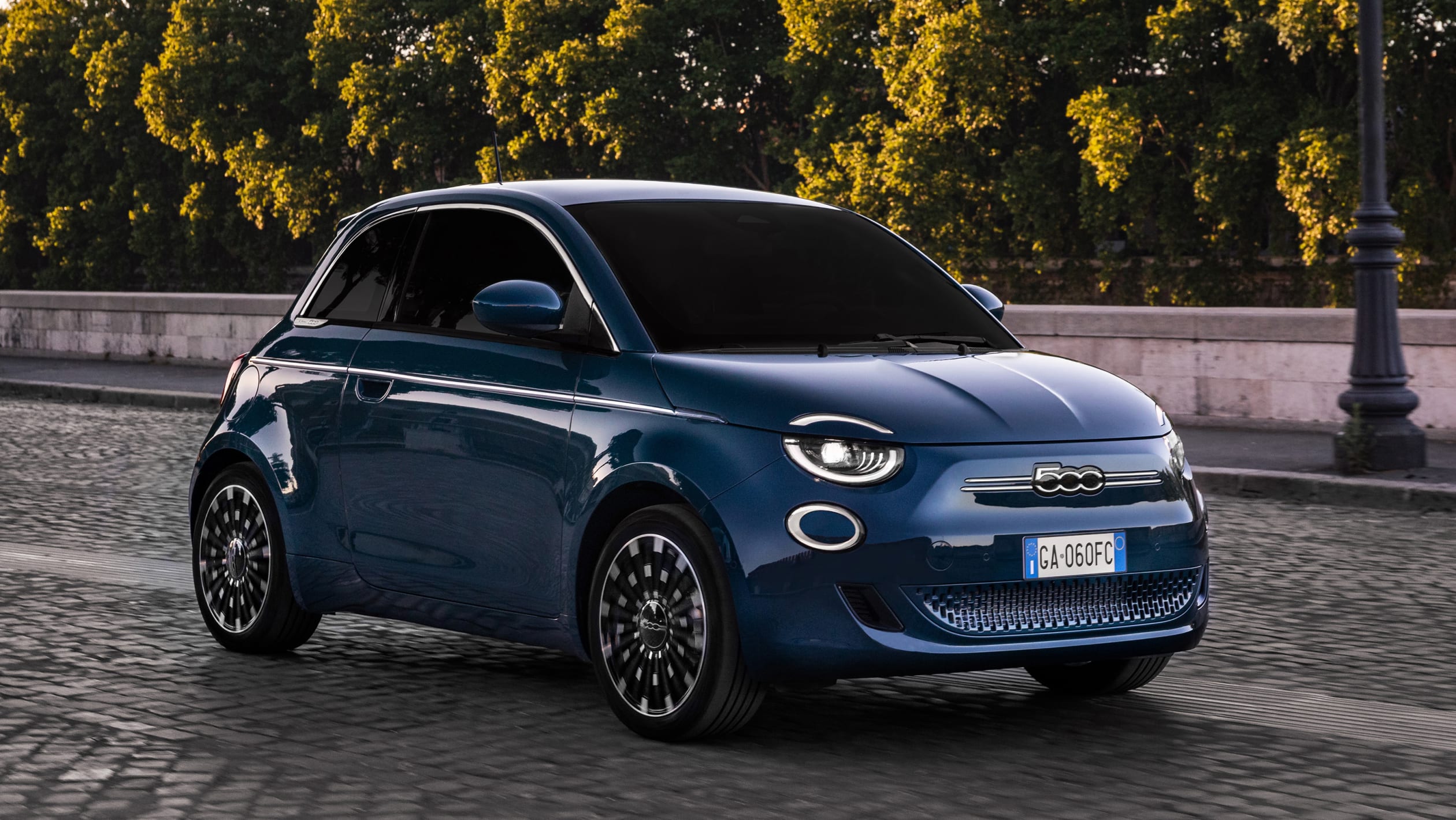Some cars just want an oil change and a little love. They want your wallet, your time, and your patience. When it comes to cars, not all are created equal — especially when you’re looking at long-term ownership. Some vehicles are practically immortal, soldiering on for hundreds of thousands of miles with little more than an oil change and tire rotation.
Others, however, feel like they were engineered to break your spirit (and your bank account) one expensive service visit at a time. Whether you’re hunting for a reliable daily driver or avoiding a potential money pit, this list has you covered.
Here are five cars that run forever on basic maintenance, and five that might have you setting up a permanent lounge chair at your local dealership.
5 Cars That Run Forever on Basic Maintenance
Whether you’re looking to buy your next daily driver or just dreaming about a vehicle that won’t drain your savings on repairs, this list is for you. Here are five cars that run forever on basic maintenance — the real mechanical MVPs that will outlast trends, tech gimmicks, and most of their drivers.
Honda Accord
The Accord is where performance and reliability intersect. Honda’s engineering philosophy gives this midsize sedan a durable edge, and with basic care, these cars seem nearly immune to breakdowns.
The most you’ll usually need to worry about is a timing belt at higher mileage and regular wear-and-tear parts like brakes. As many owners put it, “I forgot what my mechanic looks like.”
The Honda Accord isn’t the go-to favorite it once was. This mid-size sedan used to dominate Honda’s sales charts, but those days are behind it.
Today, it’s outsold by crossovers like the CR-V, HR-V, and Pilot, as well as the compact Civic. While the Accord continues to sell in solid numbers, its appeal has narrowed—fewer buyers are drawn to its blend of a low-slung, sporty seating position and its roomy, accommodating interior.
Still, for those who appreciate what it offers, the Accord remains a superb choice. In fact, half of its buyers now opt for the excellent gas-electric hybrid version.
Sitting at the top of the Accord lineup is the 2025 Honda Accord Hybrid, starting at $33,655. This version adds more than just fuel efficiency—it delivers zippier acceleration and an all-around more efficient drive.
We spent a full week behind the wheel of the 2025 Accord Hybrid to get a deeper sense of how this mid-size sedan performs across the board—spaciousness, driving enjoyment, and efficiency included. Stick with us as we break down its strengths and weaknesses to help you figure out if it belongs in your driveway.
If the price tag on the Accord Hybrid strikes you as high, here’s an important detail: there’s no stripped-down budget trim like the Toyota Camry LE.
The entry-level Accord Hybrid Sport comes with equipment comparable to the gas-only Accord SE, which already starts at $30,560. That means the roughly $3,000 premium nets you better fuel economy, an extra 12 horsepower, and 55 more lb-ft of torque. Not bad at all.
Under the hood, the Accord Hybrid pairs its electric motor with a 2.0-liter gasoline engine. That engine keeps a small battery charged, which in turn powers the electric motor.
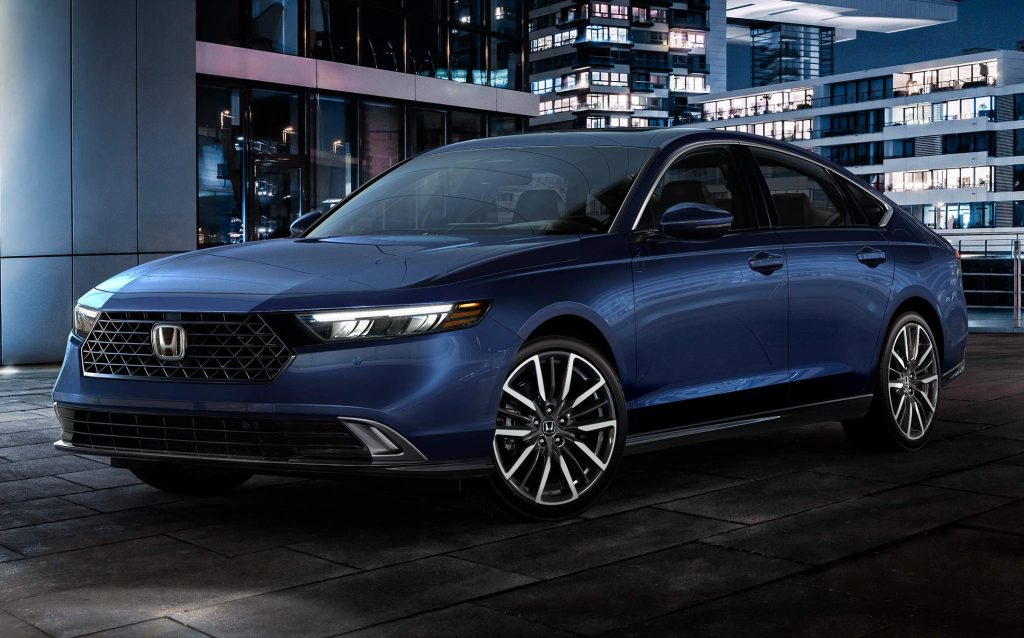
The car is capable of driving on electricity alone for short distances and under light acceleration. It can enter electric-only mode automatically, or you can press the “E” button on the center console to stay in EV mode a bit longer.
Standard features on the Hybrid include a moonroof, a 10-way power driver’s seat, heated front seats, a 12.3-inch infotainment touchscreen, an eight-speaker sound system, and a full suite of advanced safety and driver-assist systems—like adaptive cruise control and blind-spot monitoring.
Upgrading to the EX-L ($34,940) replaces the cloth seats with leather, while the Sport-L ($35,375) adds sportier styling touches to the EX-L package. At the top, our test model—the Touring ($39,300)—includes ventilated front seats, heated rear seats, a heated steering wheel, a head-up display, rain-sensing wipers, and an upgraded infotainment system.
With 204 horsepower and 247 lb-ft of torque from its combined gas-electric setup, the Accord Hybrid isn’t built for raw speed—but it’s no slouch either. It’s brisk enough to feel genuinely responsive, and its drivetrain runs more smoothly and quietly than what you’ll find in the Toyota Camry, giving the Accord a more refined, upscale edge.
Our own testing blew those EPA numbers out of the water. Over a week of mixed-use driving, we averaged a remarkable 51 mpg. The weather was ideal for hybrids—warm but not scorching—which helped, but the Accord still deserves the credit. For context, we recently got 44 mpg in a hybrid Camry and 47 mpg from a Hyundai Sonata Hybrid.
The Accord’s capable, quiet powertrain pairs well with its confident handling and composed ride. Among mid-size family cars, this is the one that drives most like a premium sports sedan.
It’s a major point in the Accord’s favor over crossovers. With its lower center of gravity, it offers a nimbleness you just won’t find in an SUV. Where the Camry or Sonata tends to float along softly, the Accord grips the road and feels dialed-in.
That said, some might find its ride a little firm and prefer the more cushioned feel of other sedans. But for those who want a car that feels tightly engineered and consistent in its behavior, the Accord delivers.
A selectable Sport mode sharpens throttle response and gives the steering a heavier, more connected feel. Honda also adds flexibility with a customizable “Individual” mode, so you can fine-tune the steering and throttle to your liking—whether you want aggressive power delivery with lighter steering, or vice versa.
Also Read: 5 Cars Rated Best for First-Time Buyers and 5 Giving New Drivers Fits
Lexus RX
This luxury SUV doesn’t just look good — it lasts. Built on Toyota’s dependable architecture, the Lexus RX offers comfort without sacrificing long-term dependability. It’s common to see these vehicles sail past 200,000 miles with little more than basic maintenance. As one Lexus fan put it, “It’s a luxury car that acts like a Camry under the hood” — and that’s high praise.
The 2024 Lexus RX serves as the brand’s midsize SUV designed for five passengers. It strikes a balance in the lineup, offering more space and size than the compact NX while remaining smaller than the three-row LX and the newly introduced TX models.
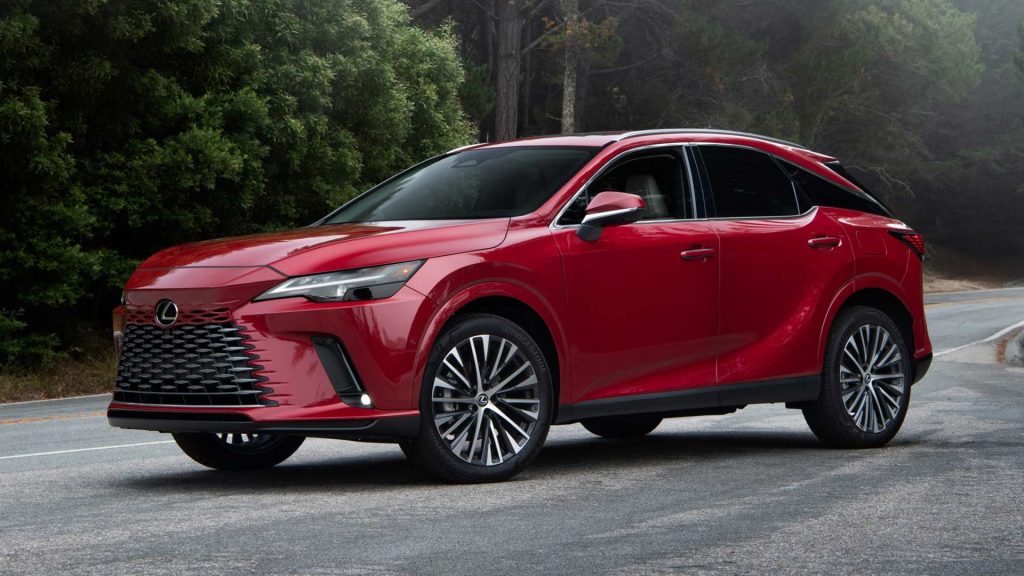
Buyers can now choose from four distinct variants: the standard RX 350, the fuel-efficient hybrid RX 350h, the recently added plug-in hybrid RX 450h+, and the performance-focused hybrid RX 500h. If your top priorities are comfort and refinement, this SUV is likely to impress.
The RX received a full redesign just last year, bringing notable improvements to its driving dynamics. One of the most welcomed changes is the removal of the previously criticized infotainment system, now replaced by a large, user-friendly touchscreen interface that places it on equal footing with rival models.
The cabin’s updated design also reflects a modernized approach, all while retaining the premium look and feel that have become synonymous with Lexus.
Subaru Outback (pre-2015 models)
Rugged, practical, and surprisingly durable, older Subaru Outbacks have earned a cult following among drivers who value longevity.
If you can get past the occasional head gasket issue in early models, the Outback is a mechanical workhorse. These cars are driven into the ground and still seem to come back for more. It’s not the prettiest on the road, but you’ll be laughing when you’re still driving it 300,000 miles later.
Every Subaru Outback model now features a continuously variable automatic transmission (CVT) as standard, while the available engines remain a 2.5-liter four-cylinder and a 3.6-liter six-cylinder.
With updates such as the revised CVT, active grille shutters designed to minimize wind resistance, and the switch to electric-assist power steering, the Outback enjoys improved fuel economy. Regardless of the engine you choose, there’s a 2-mpg increase in the EPA’s combined fuel economy estimate compared to the previous model year.
Subaru also responded to criticism regarding the previous Outback’s cabin, which had been noted for its abundance of hard plastic surfaces and peculiar control layout.
For 2015, the interior has been completely redesigned, showcasing significant upgrades in both material quality and ergonomic layout. Catering to tech-savvy users, the navigation system’s screen now supports pinch-to-zoom gestures, allowing you to zoom in and out by squeezing your fingers together or apart.
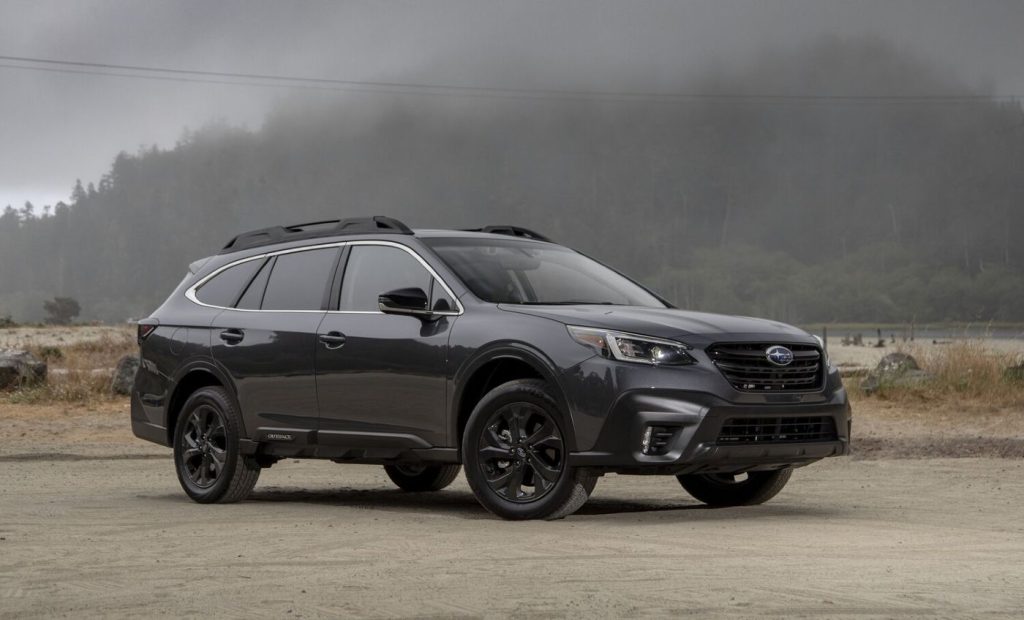
At the same time, the new Outback enhances safety by adding front seat cushion airbags, a now-standard rearview camera across all trims, and newly available features such as blind-spot monitoring, lane change assist, and rear cross-traffic alert.
As with previous generations, the Subaru Outback continues to carve out a unique niche in the market. Comparable alternatives like the 2015 Audi Allroad and 2015 Volvo XC70 offer all-wheel drive, turbocharged engines, and more upscale interiors, but they come with a higher price tag—and in the case of the Audi, less cargo room.
For those not sold on the wagon format, other small crossovers such as the well-rounded 2015 Honda CR-V, the rugged 2015 Jeep Cherokee, the family-friendly seven-seat 2015 Kia Sorento, and Subaru’s own Forester are worth considering. Still, with the enhancements made for 2015 and a longstanding reputation for dependable handling, the Outback remains a smart pick for families with an active lifestyle.
The 2.5-liter four-cylinder engine is standard for all 2.5 models, delivering 175 horsepower and 174 pound-feet of torque. This engine is paired with a CVT. All Outback variants come equipped with all-wheel drive, hill descent control, and hill start assist.
In testing conducted by Edmunds, a 2.5i Limited version of the Outback accelerated from zero to 60 mph in a sluggish 9.6 seconds. Most competitors manage that same sprint in around 8 seconds.
Ford Crown Victoria
Built like a tank and driven like a sofa on wheels, the Crown Vic is beloved by police departments, taxi fleets, and durability die-hards alike.
Its body-on-frame construction and simple, reliable V8 drivetrain make it virtually unkillable. If you can find one today, you’ve found yourself a car that just doesn’t quit. All it asks for is oil, tires, and maybe some suspension maintenance now and then — especially if your daily route includes potholes.
The Ford Crown Victoria stands as one of the most iconic police vehicles ever produced in the United States. In fact, an impressive 85% of law enforcement vehicles in both the U.S. and Canada were Crown Victorias.
However, it wasn’t just limited to fleet use — this full-size sedan was also available to the general public, with civilian sales playing a significant role in its production.
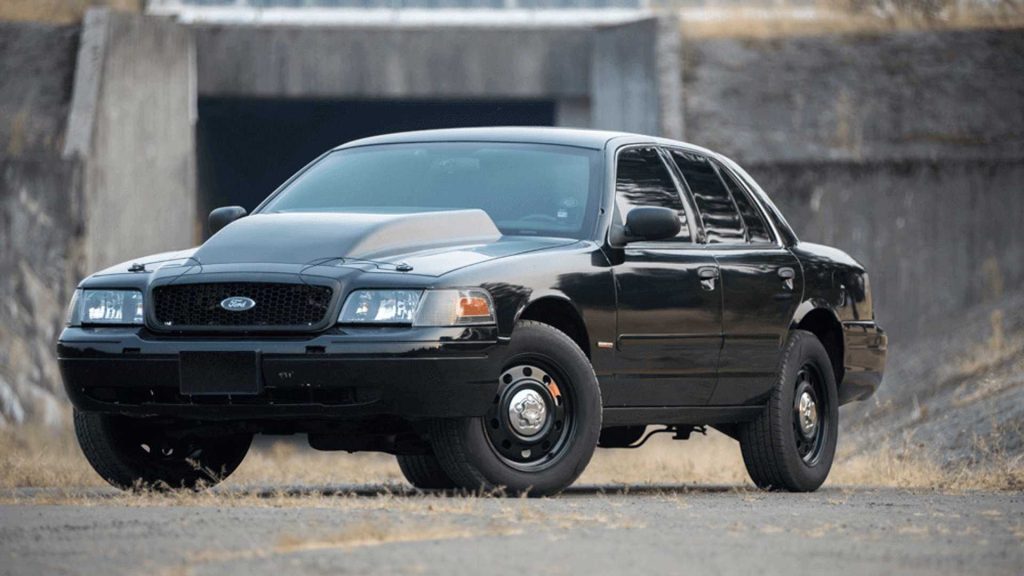
Built on the same platform as the Mercury Grand Marquis, the Crown Victoria came with fewer luxury features but maintained the same robust architecture. With its rear-wheel-drive layout, the large sedan delivered a smooth ride and superior balance compared to many similarly sized front-wheel-drive models.
The design of the Crown Victoria included a traditional front fascia, marked by broad headlights and a chrome grille. Its appearance was unmistakable in a rearview mirror — a feature well-known to both drivers and those being followed. Thanks to a short front overhang paired with an extended rear trunk, the car often appeared even bigger than it actually was.
Inside the cabin, the Crown Victoria was capable of seating up to six people, offering a three-across layout in both front and rear rows.
For the front, optional bucket seats could replace the standard bench, while the rear featured a fold-down armrest for added comfort. That said, the sizable transmission tunnel running through the floor made it a tight fit for three adults in the back row.
Under the hood, Ford equipped the Crown Victoria with a 4.6-liter V8 engine, which was offered in four different power outputs. The default transmission paired with the V8 was a 4-speed automatic engineered for smooth, comfortable driving.
Also Read: Top 10 Cars Restored by Popular American YouTubers
Toyota Corolla
The Corolla is the very definition of reliable transportation. Toyota engineered this car not to excite, but to endure. It’s the kind of vehicle that just works — no frills, no fuss.
Owners frequently report racking up 250,000 miles or more with nothing more than routine oil changes, tire rotations, and the occasional brake job. The universal sentiment among long-time drivers? “Nothing ever breaks. It just goes.” And honestly, that’s all most people want.
Beneath the hood of the gas-powered 2025 Toyota Corolla lineup lies the same engine and transmission combination found across the board: the 2.0-liter M20A-FKS four-cylinder engine, which is also shared with the Toyota C-HR, Camry, Corolla Cross, and Lexus ES 200.
This powerplant is mated to the K120 “Direct Shift” continuously variable transmission (CVT), which incorporates a single physical gear and nine simulated ones, resulting in a total of 10.
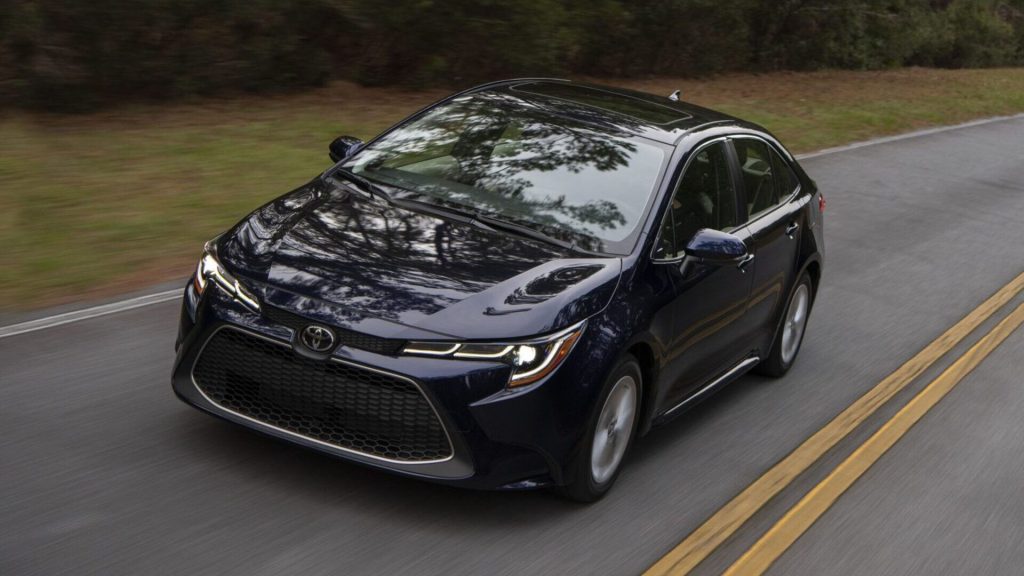
Output figures remain consistent throughout the lineup: 169 horsepower and 151 lb-ft of torque. That combined power is delivered to the front wheels — specifically, 16-inch steel wheels with covers on the LE trim, while the SE, FX, and XSE trims ride on 18-inch alloy wheels.
For those opting for the FX trim, the 18-inch alloys come finished in satin black with machined accents, and the test model came equipped with Dunlop SP Sport 5000 all-season tires.
Handling is supported by independent MacPherson struts and a stabilizer bar at the front, paired with a multi-link rear suspension on SE through XSE trims. Meanwhile, the LE trim continues with a torsion beam setup at the rear.
Braking performance is consistent across all trims, with the entire range featuring 10.8-inch vented front discs and 10.2-inch solid rear discs. Altogether, it’s a well-rounded setup — a testament to the Corolla’s legacy of reliable performance that has defined its six-decade journey on the road.
5 Cars That Demand Dealer Visits Monthly
If you’re shopping for a car and want to know which ones to avoid unless you’ve got a mechanic on speed dial, you’re in the right place. Here are five cars that demand dealer visits monthly — the ones that turn ownership into a full-time job.
Range Rover (especially older models)
The Range Rover is beautiful to look at and a dream to drive — for the first few weeks. Then come the air suspension failures, the mysterious warning lights, and the electrical bugs that even the service techs can’t explain.
These vehicles are notorious for their reliability issues, and once the problems start, they rarely stop. “Check engine light has its own apartment in my dashboard” is how one exasperated owner described it. Most fixes aren’t DIY-friendly, so expect frequent (and expensive) dealer visits.
The Range Rover was the pioneer of the luxury SUV segment, delivering a blend of prestige, comfort, opulence, and performance. With the debut of its fifth generation, Land Rover moved closer to electrification by incorporating hybrid drivetrains, offering the model in both short and long wheelbase configurations.
While designing an ultra-luxury vehicle with a segment-leading aerodynamic coefficient might seem redundant due to the vehicle’s sheer frontal mass, Land Rover engineers took on the challenge.
Their efforts resulted in a drag coefficient of 0.30 Cx, enhancing the SUV’s fuel efficiency. The front end, featuring flush-mounted headlights and a sharply raked grille, evoked the styling cues of a futuristic concept vehicle.
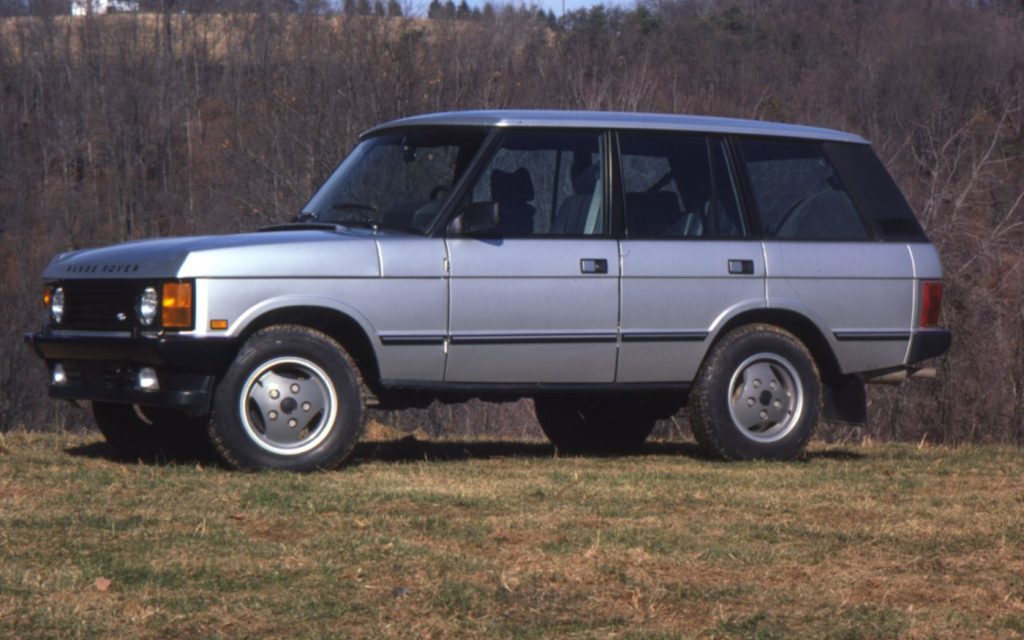
Adding to its modern appeal, the Range Rover adopted the sleek, retractable door handles seen on the Range Rover Velar and Jaguar F-Type. Its rising beltline and gently sloping roofline were also elements shaped by aerodynamic considerations.
Inside, Land Rover spared no effort in crafting a refined and indulgent space for four or five passengers. The new Range Rover came in three distinct trim levels: SE, HSE, and Autobiography. Dominating the center console was a 13.1-inch touchscreen that provided access to most of the vehicle’s onboard functions.
The driver, meanwhile, was treated to a 13.7-inch fully digital instrument cluster. With an interior made from premium and environmentally responsible materials, the Range Rover SWB demonstrated the brand’s strong commitment to a more sustainable future.
Underpinning the fifth-gen Range Rover was Land Rover’s new MLA platform, which supported the integration of a 4.4-liter twin-turbocharged V8 engine sourced from BMW. Additionally, a plug-in hybrid variant offered an electric-only driving range of up to 80 kilometers (50 miles).
BMW 7 Series
The flagship sedan of the BMW lineup might as well come with a live-in mechanic. While it offers a silky-smooth ride and cutting-edge tech, it also comes with complex systems that tend to fail in very expensive ways.
From leaky coolant systems to electronic gremlins and air suspension issues, the 7 Series is the definition of high-maintenance luxury. As one owner put it, “I spent more on repairs last year than on the car itself.” Routine servicing quickly becomes a luxury tax all its own.
Every new BMW 7 Series sedan comes equipped with either a six- or eight-cylinder turbocharged engine, paired with an eight-speed automatic transmission sourced from ZF and operated via paddle shifters.
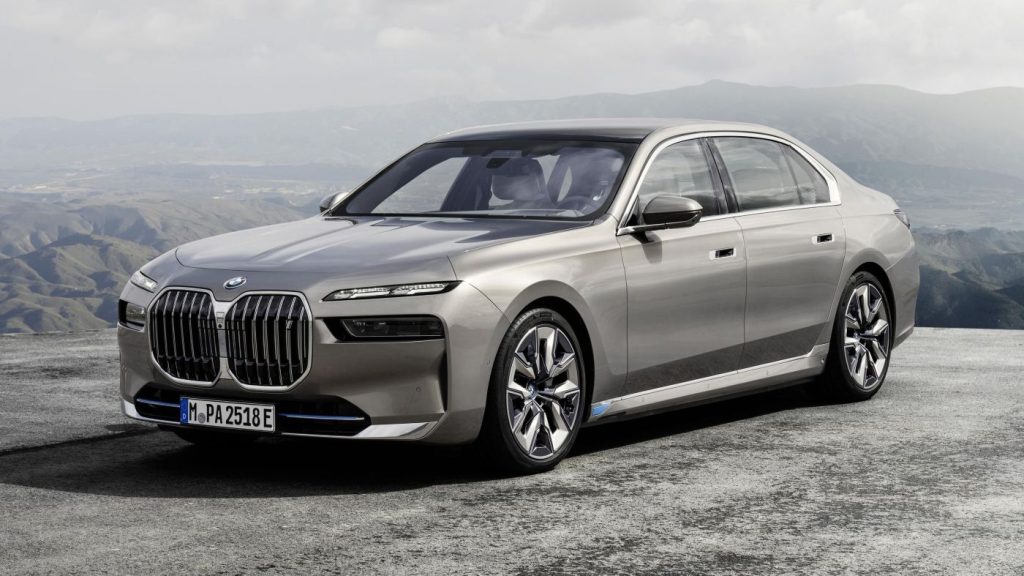
At the lower end of the lineup—though calling any sedan starting at $100,000 “low” is a stretch—sit the 740i and 740i xDrive. Both are powered by BMW’s B58 inline-six engine, producing 375 horsepower. For those seeking electrification, there’s the 750e plug-in hybrid, which combines an electric motor with a gasoline engine to generate a total of 483 horsepower.
Sitting at the top of the gas-powered 7 Series range is the 760i xDrive. It’s the quickest of the lineup, with BMW estimating a 0-to-60 mph time of just 4.1 seconds.
What sets this model apart is its engine—it’s powered by the S68, a unit built by BMW M. This 4.4-liter twin-turbocharged V8 delivers 536 horsepower and 553 pound-feet of torque, giving the 760i a distinct performance edge and positioning it as the closest thing to an “M7.”
Jeep Grand Cherokee (2011–2014 models especially)
These SUVs look tough and drive well — until the problems start stacking up. Owners of certain model years report persistent issues with transmissions, infotainment systems, and electrical components.
What’s worse, many of the problems start showing up shortly after the warranty expires. “Great SUV… when it’s not in the shop,” sums up the average experience. You’ll either become best friends with your service advisor, or regret not buying the extended warranty.
The Jeep Grand Cherokee delivers a blend of off-road prowess and on-road refinement, all within a design that is both stylish and practical. It comes with a selection of six- and eight-cylinder engines, as well as a newly introduced plug-in hybrid version.

The original ZJ-generation Jeep Grand Cherokee was conceived as a larger, more upscale successor to the brand’s XJ-based Cherokee. When it debuted as a 1993 model, it was positioned as the premium alternative and sold alongside the existing Cherokee.
Initially, the Grand Cherokee was only available with a 4.0-liter inline-six engine, but a 5.2-liter V8 was added later that same year. In the model’s final production year in 1998, a 5.9-liter V8 was introduced. Though the majority of Grand Cherokees were built in the United States, certain versions were also assembled in Graz, Austria, by Magna Steyr to serve international markets.
In 1993, Jeep also introduced a special edition known as the Grand Wagoneer. This model functioned as a more luxurious trim level of the Grand Cherokee and was not intended to replace the original Grand Wagoneer SUV.
Audi A6
Audi’s sleek A6 is fun to drive and full of tech — but reliability isn’t its strong suit. As mileage increases, so do the headaches. Oil leaks, turbo failures, and nagging electronic issues plague owners who expected more from a premium brand.
One frustrated driver summed it up perfectly: “Drives like a dream, drains my savings like a nightmare.” DIY repairs are rare, and parts are pricey, so the dealer usually becomes your second home.
Following a light refresh for the 2024 model year, the Audi A6 returns for 2025 with a few subtle updates. Traffic sign recognition is now standard across the entire lineup, and the Homelink universal garage door opener controls have been relocated from the touchscreen interface to the rearview mirror housing for added convenience.
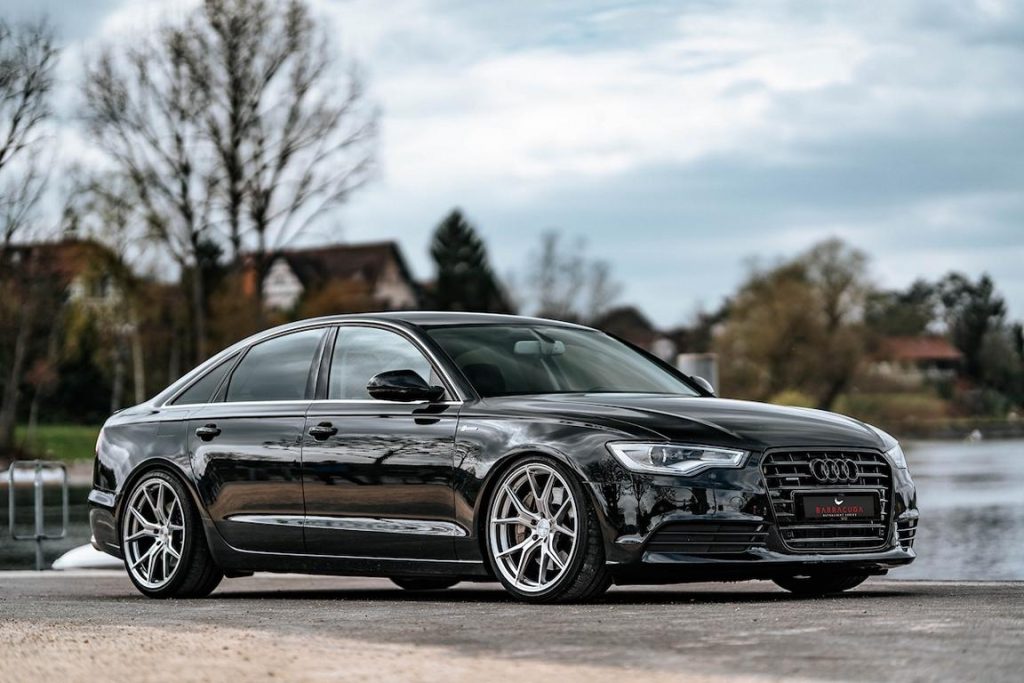
The A6 45 Premium trim gains access to a new Convenience Plus package, which adds 20-inch wheels, a lowered sport suspension, black exterior accents, and the LED Interior Lighting Plus package.
Moving up to the Premium Plus trim now includes standard features such as four-zone automatic climate control, heated and ventilated front seats, dual-pane acoustic glass, and a power-operated trunk lid.
Meanwhile, the top-tier Prestige trim incorporates all the features previously bundled in the Luxury package, such as contour front seats with a massage function and upscale Valcona or Milano leather wrapping on the dashboard, center console, and armrests.
The 2025 Audi A6 is priced starting at $59,395, with the fully loaded versions reaching up to $74,645, depending on selected trims and options.
Fiat 500
Quirky and cute, the Fiat 500 may win you over with charm — until you realize that charm doesn’t get you to work when the car won’t start. Known for a variety of small but consistent mechanical and electrical issues, the 500 demands more attention than it deserves.
“I wanted quirky European charm, not weekly breakdowns,” said one owner who learned the hard way. Even finding a shop willing to work on them can be a challenge, and parts often take weeks to arrive.
Fiat revived its iconic 500 in 2007, paying homage to the original rear-engine, two-cylinder city car that debuted half a century earlier. This modern version made its way to North America for the 2012 model year, marking Fiat’s return to the U.S. market just three years after its merger with Chrysler.
Unlike the rear-driven classic, the contemporary 500 is front-wheel drive and powered by a four-cylinder engine. It sits in the same nostalgic vein as the latest Volkswagen Beetle and Mini Cooper—modern reimaginings of cars that were hits during the 1950s and ’60s.
The 2017 Fiat 500 remains a compact two-door vehicle, offered only as a hatchback or a convertible with a retractable soft top. With a footprint about six inches shorter than the Mini’s, the 500 stands out for its oversized personality, featuring retro-inspired exterior styling and a cheeky, throwback interior.
For 2017, Fiat streamlined the 500’s lineup by retaining only the Pop, Lounge, and Abarth trims. The previously available “Collection” packages have been replaced with individual options, offering more flexibility. Prices have been adjusted downward, with the entry-level Pop now including standard 15-inch alloy wheels.
The Lounge gets a redesigned 15-inch wheel, while the sporty Abarth receives parking sensors as standard and a fresh 16-inch black wheel design. Buyers can also choose from three new appearance packages: the Black Trim Appearance package, the Two-Tone Appearance package, and the 500 Abarth package.
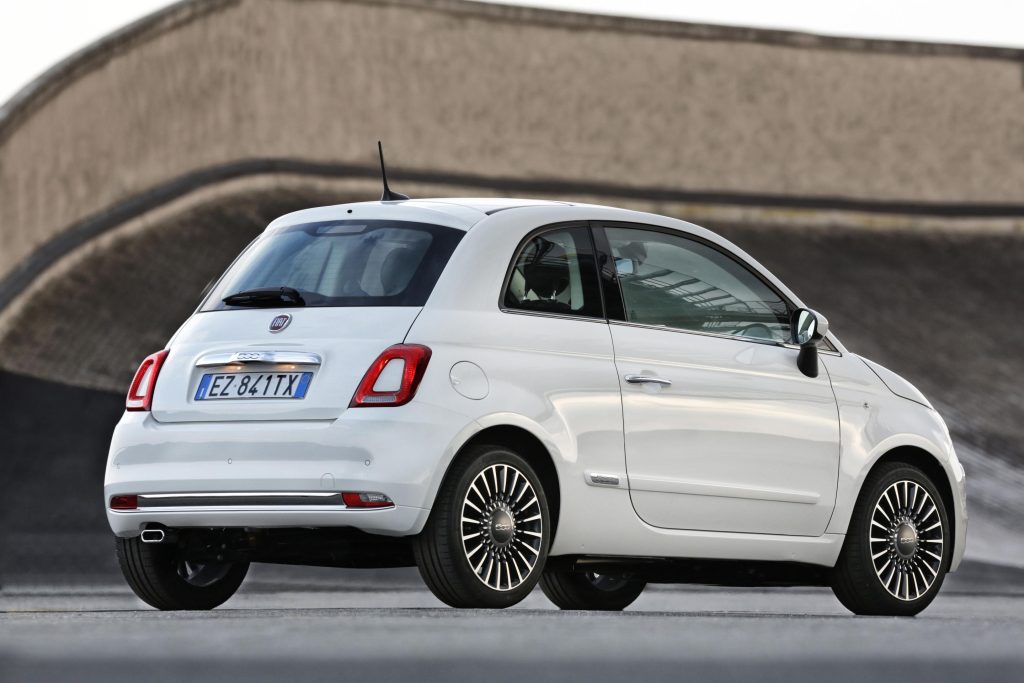
The 500 Pop and Lounge trims are equipped with a naturally aspirated 1.4-liter four-cylinder engine that produces 101 horsepower. Despite the car’s light curb weight, acceleration is modest: 0 to 60 mph takes 9.7 seconds with the five-speed manual transmission. A six-speed automatic is also offered.
For those seeking better handling, the optional Sport package lowers the suspension slightly and improves cornering grip, offering steering feedback that’s both linear and predictable. While the 500 doesn’t excel on the highway, its compact size and nimble dynamics make it a standout urban runabout.
For more performance-oriented drivers, the 500 Abarth builds on the base model’s charm with a more aggressive demeanor. It features a turbocharged 1.4-liter engine that delivers 160 horsepower and 170 lb-ft of torque when paired with the five-speed manual, or 157 horsepower and 183 lb-ft with the six-speed automatic.
This setup cuts the 0-60 mph sprint to a lively 6.9 seconds. With its sharper suspension and unique, raspy exhaust note, the Abarth offers an engaging, smile-inducing driving experience.
Though small on the outside, the Fiat 500’s tall stance provides ample headroom for taller drivers—those over six feet will still find it accommodating. The dashboard is adorned with a retro-styled plastic panel that matches the car’s exterior paint, adding to its charm.
The gearshift, whether manual or automatic, is mounted on the lower center dash instead of the floor, optimizing space. Fiat offers a variety of option packages, allowing buyers to tailor the 500 to their personal tastes.
If your priority is peace of mind and low running costs, stick with the tried-and-true workhorses: Toyota, Honda, and Lexus lead the pack in long-term reliability. They might not turn heads at the valet, but they’ll keep you on the road — and out of the shop.
On the other hand, if you’re lured in by high-end features, luxury badges, or niche charm, be ready to pay the price — not just up front, but again and again in the service bay. Sometimes, boring is brilliant. And when you’re cruising past the dealership without needing to stop, you’ll be glad you chose function over flair.

